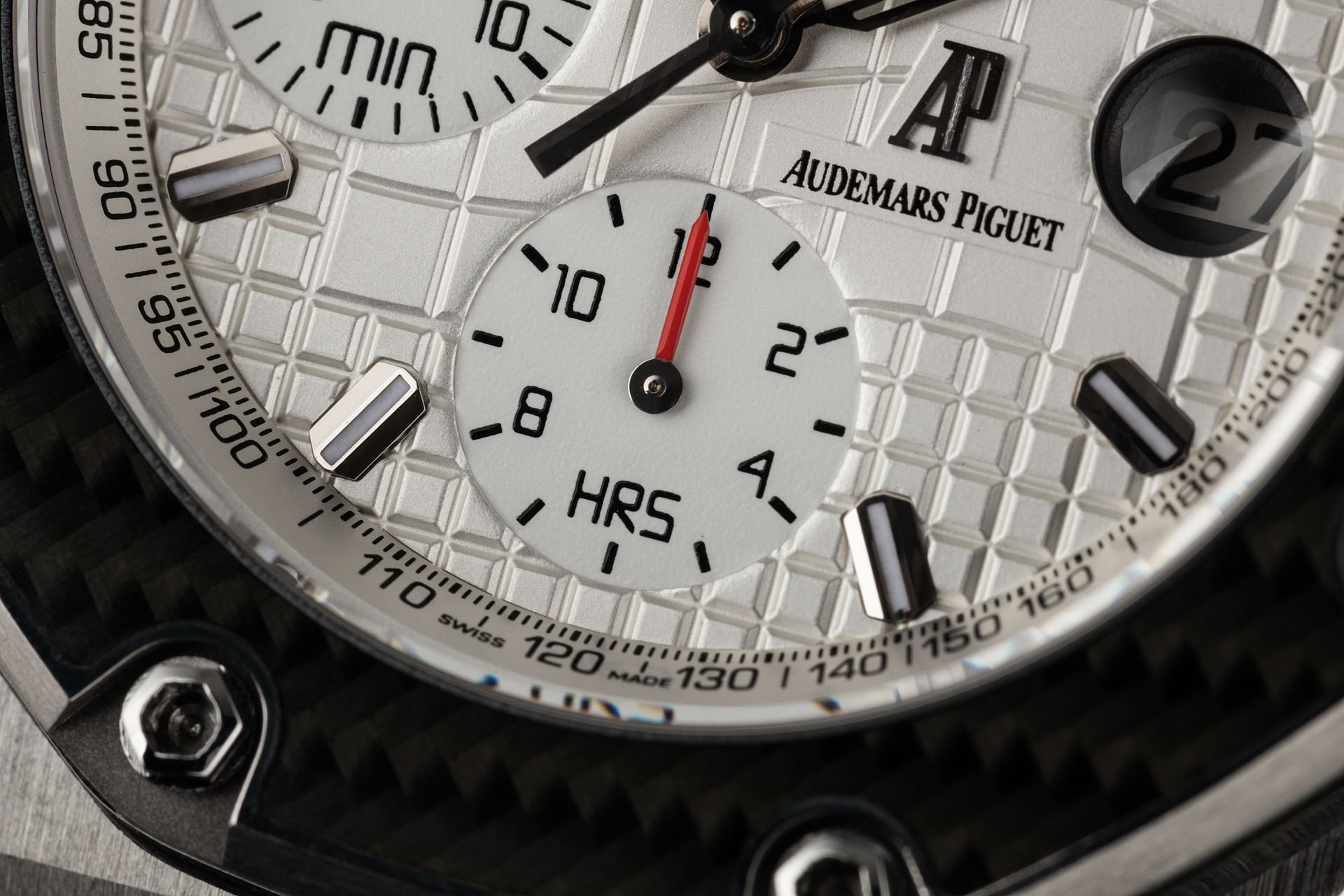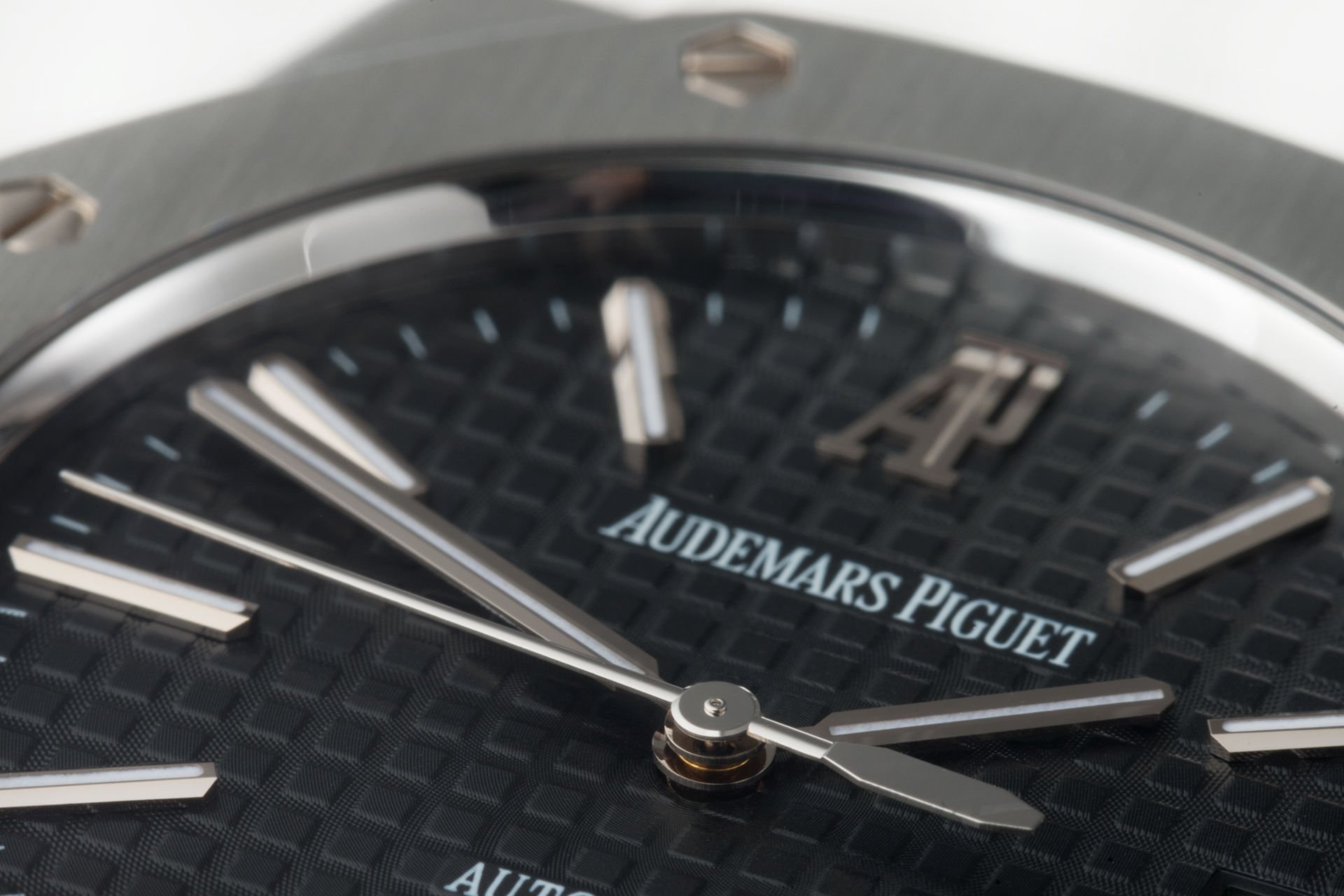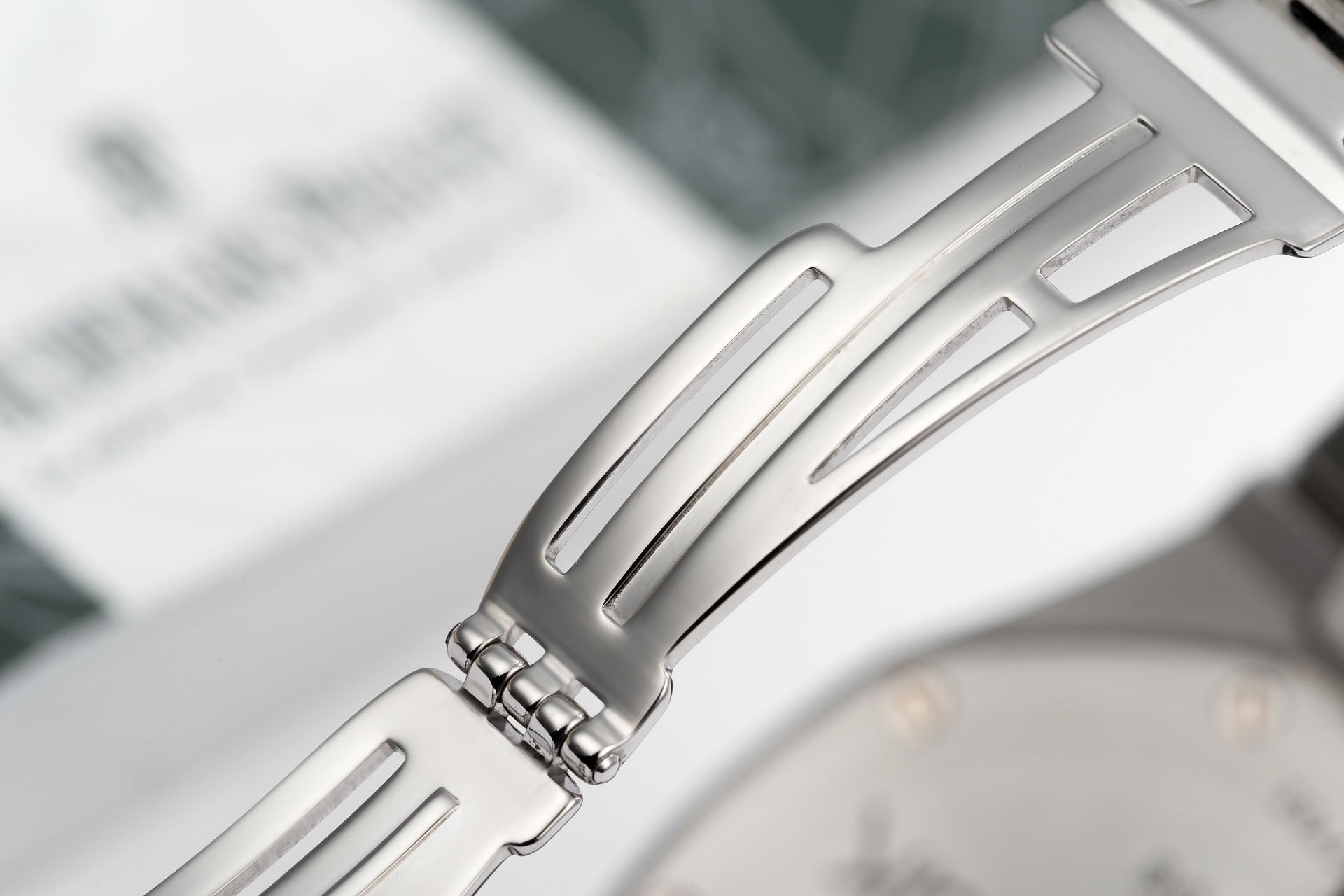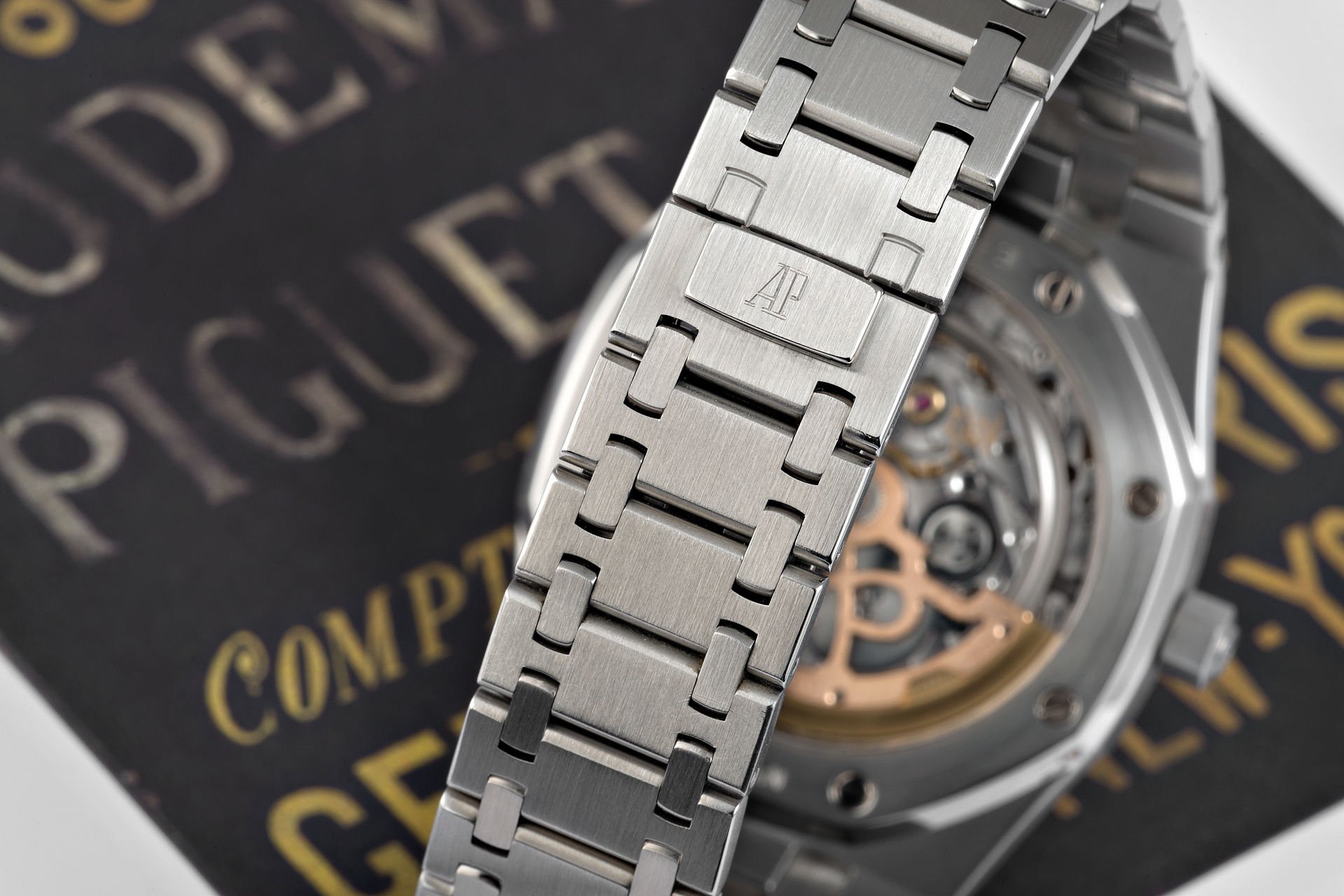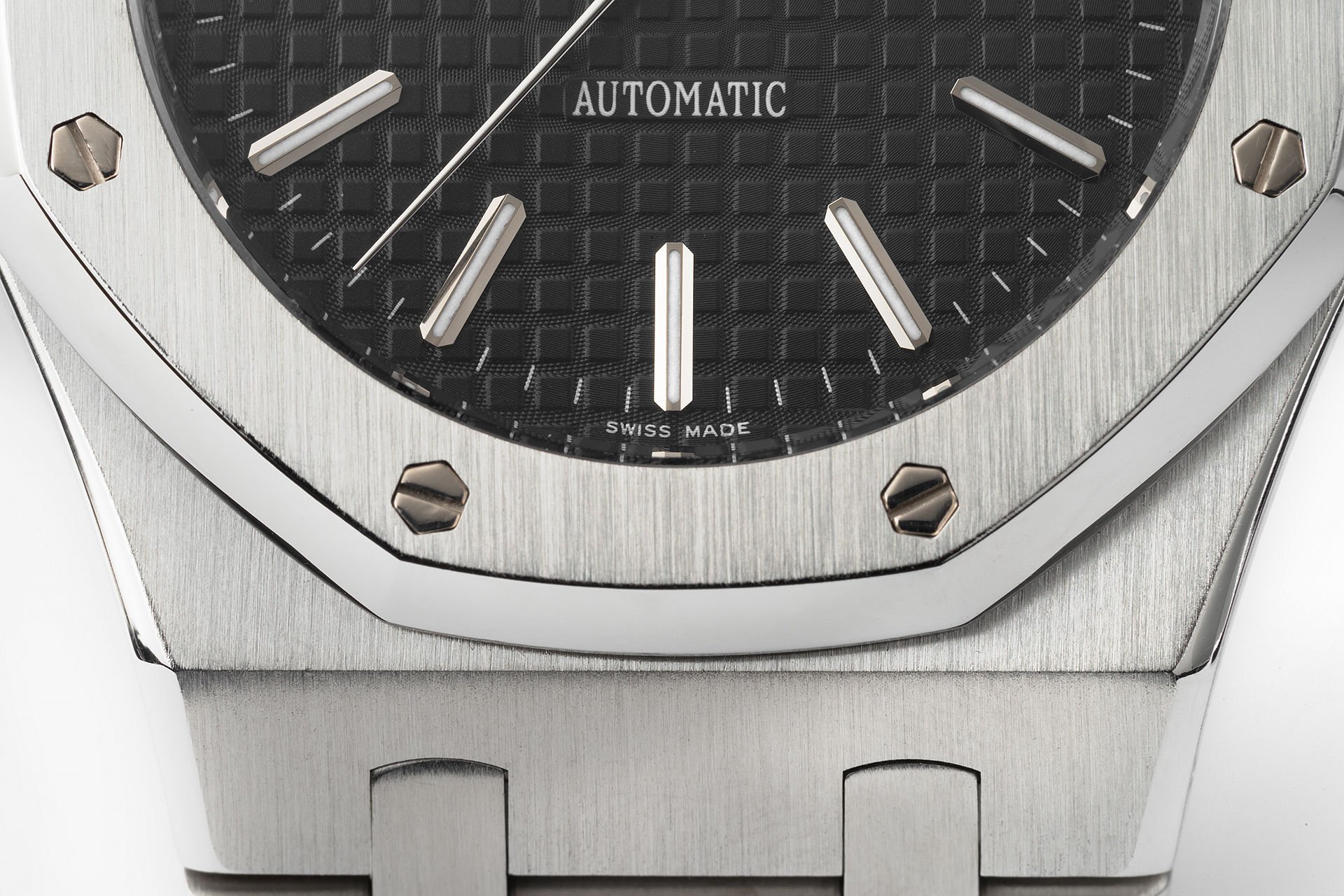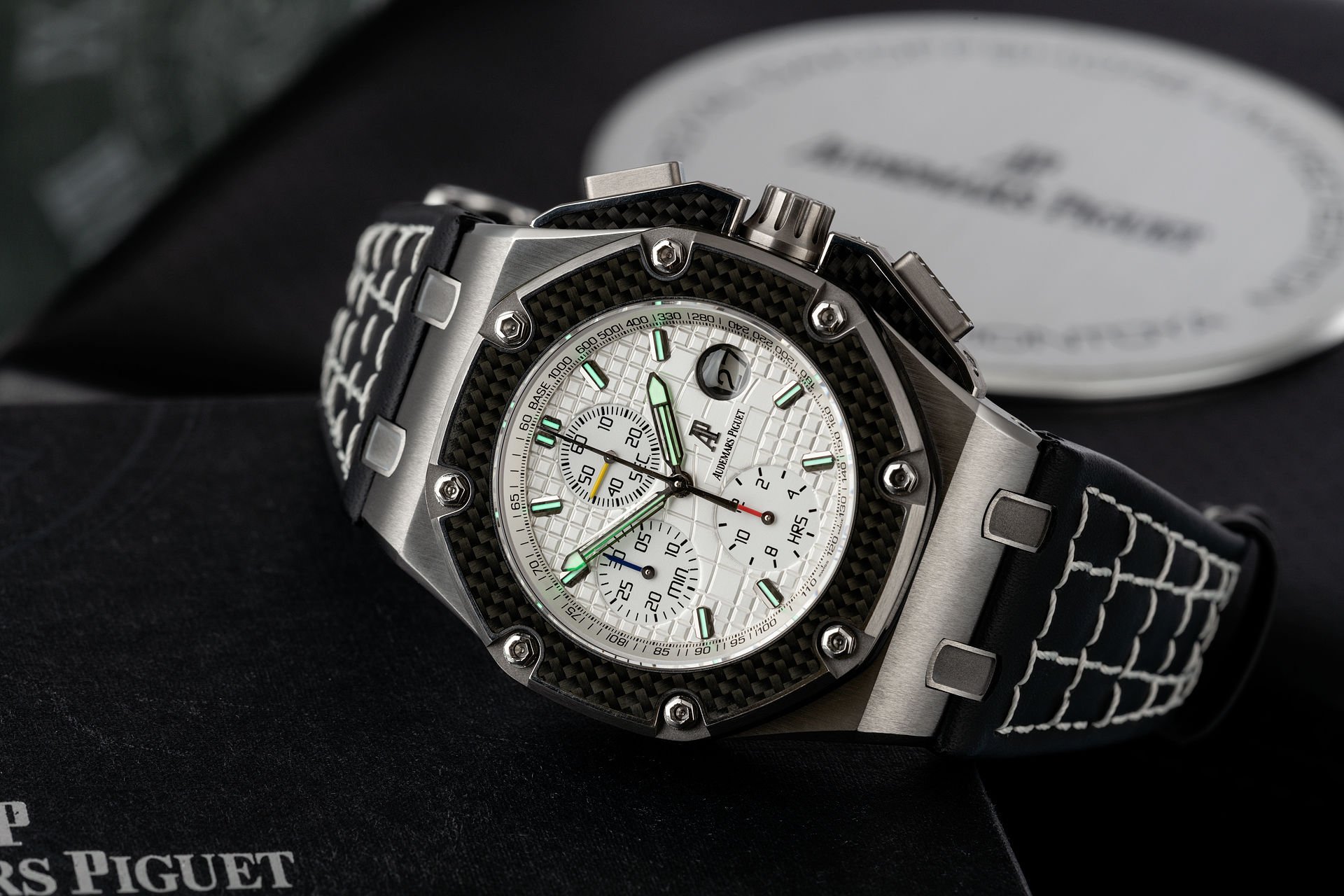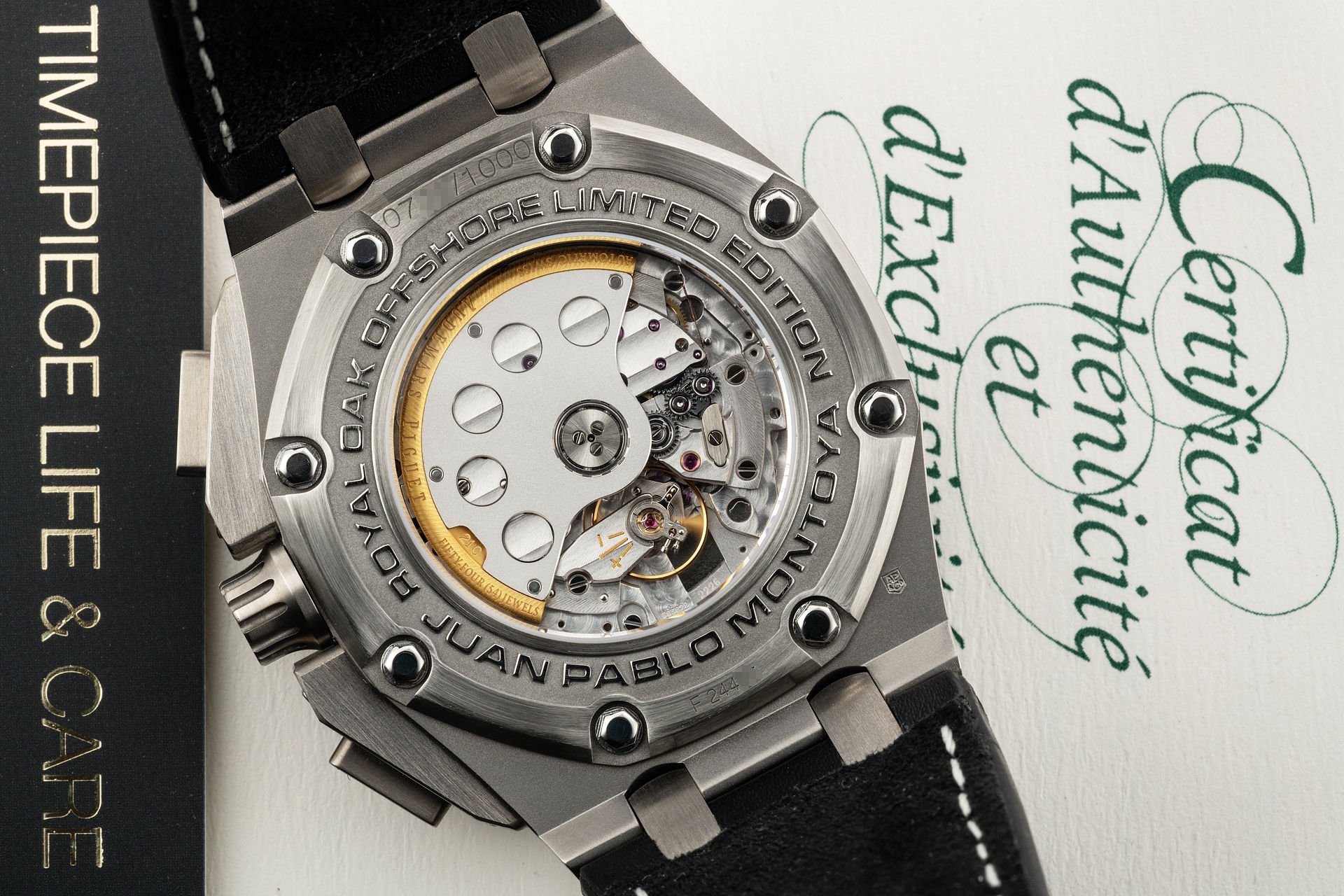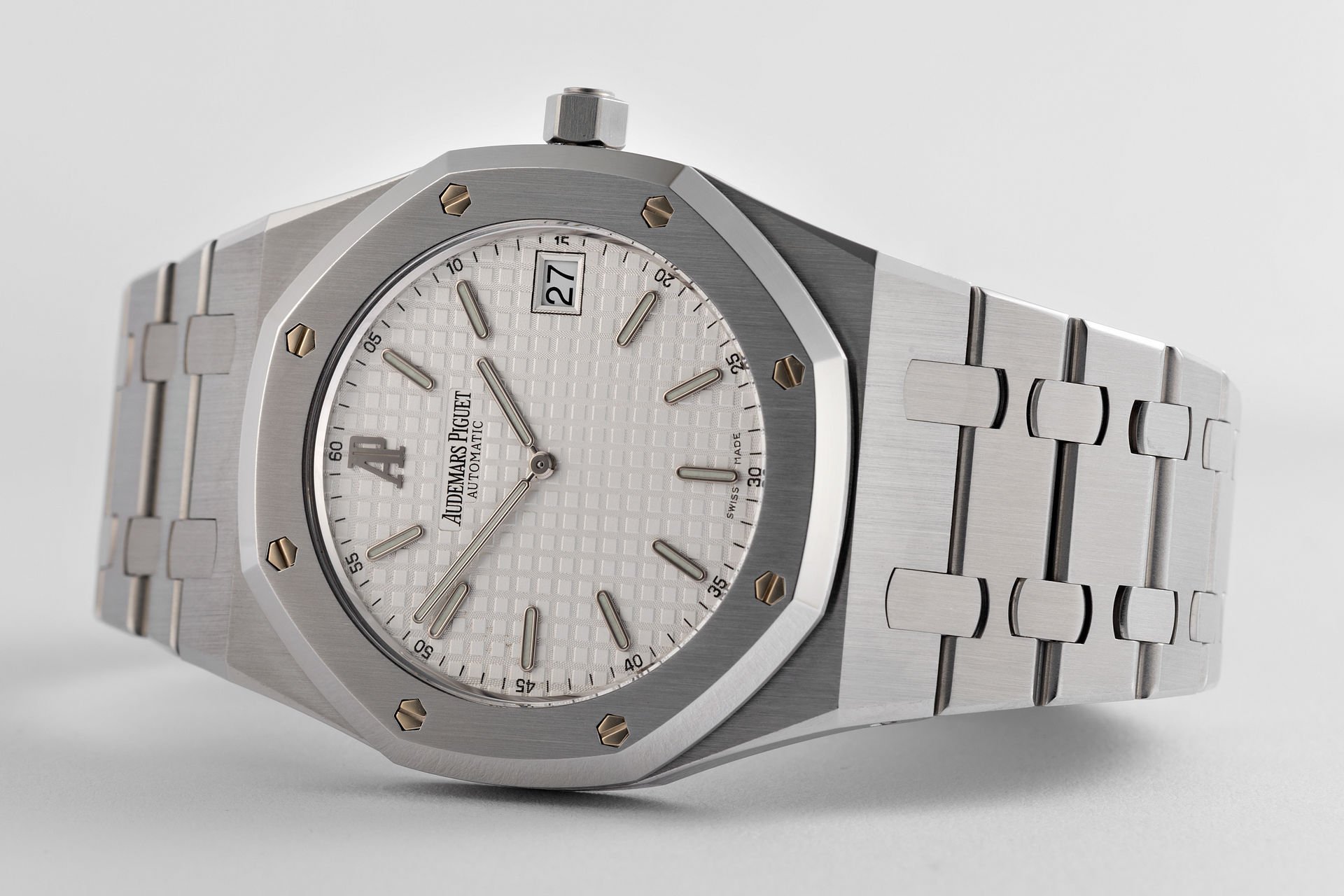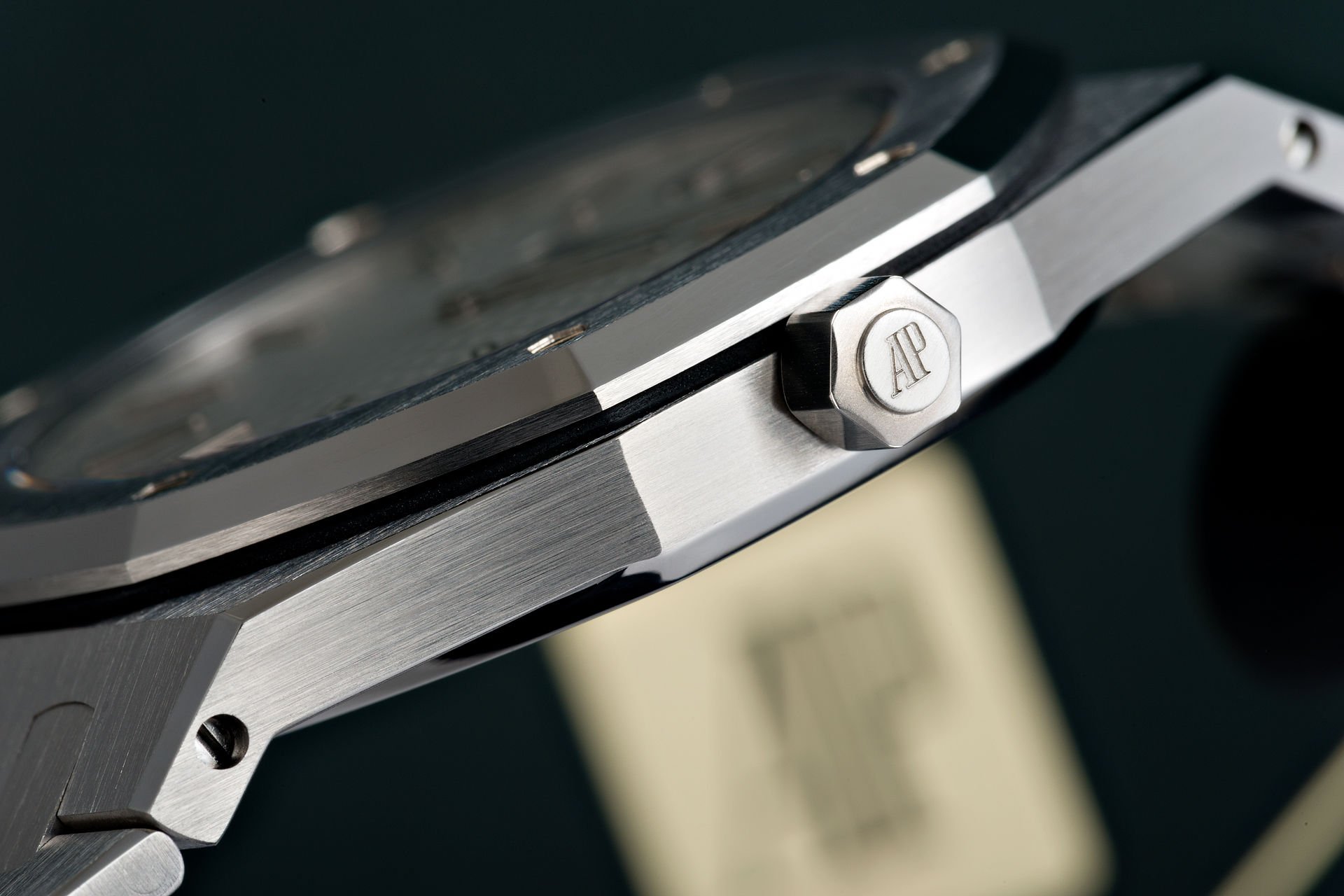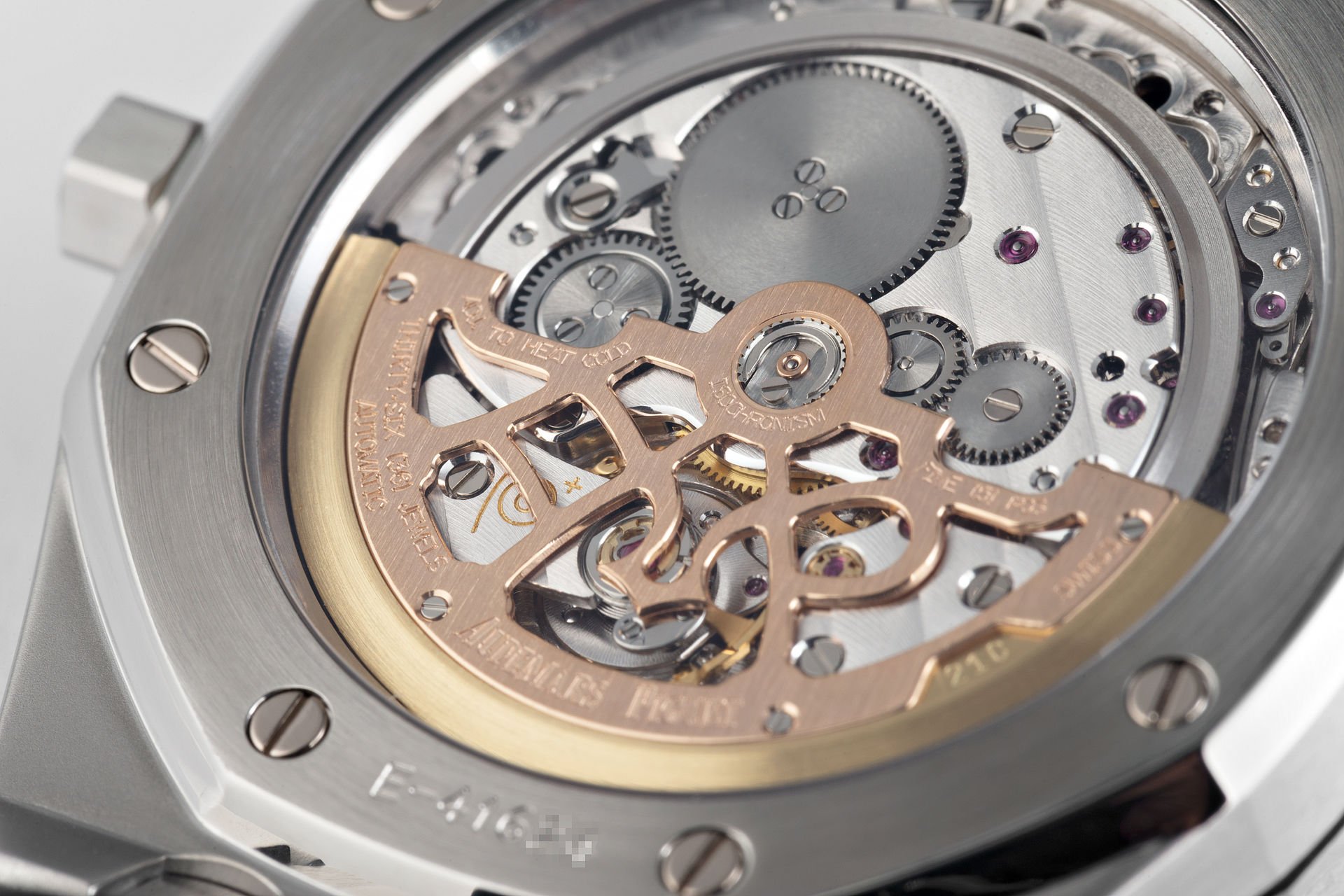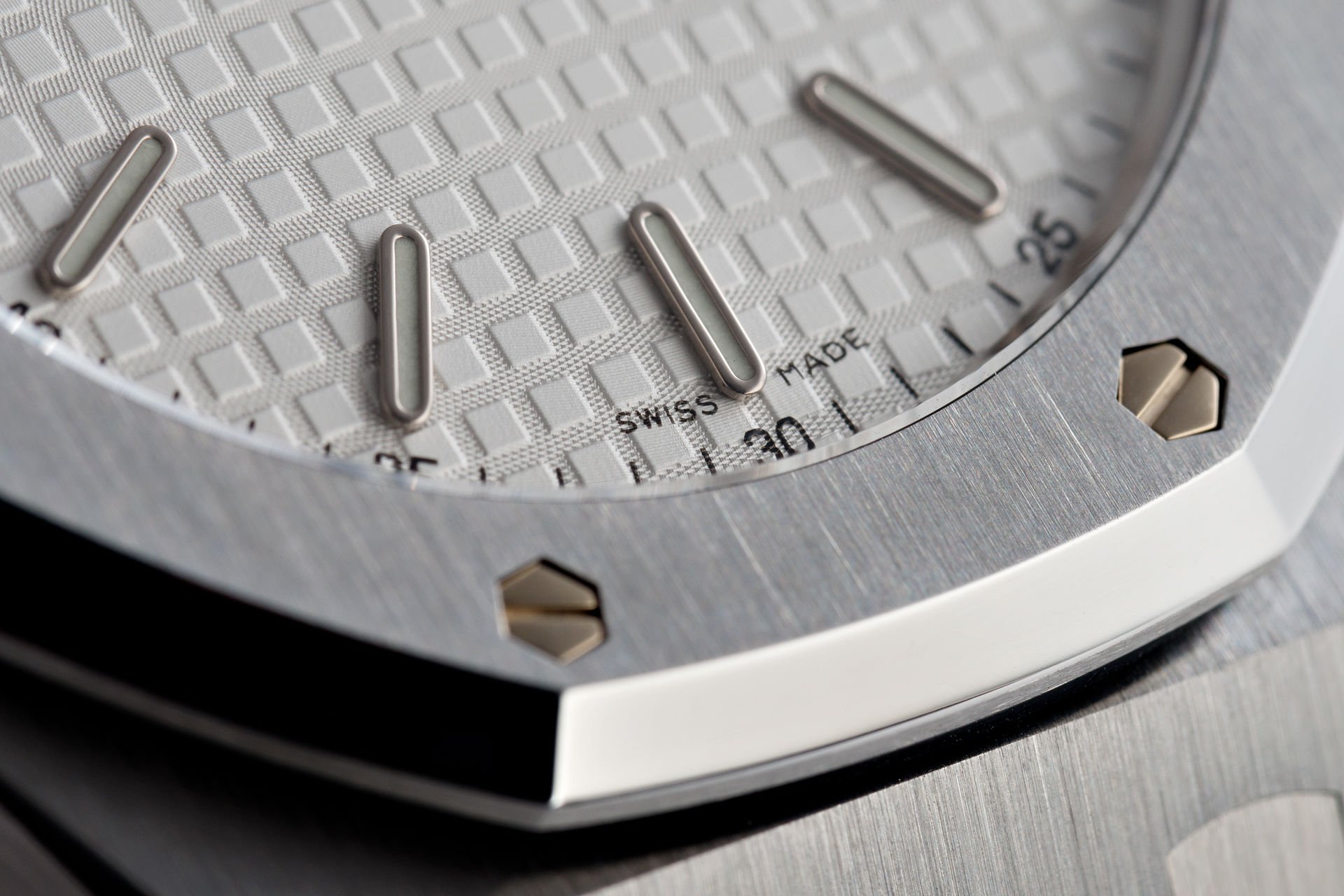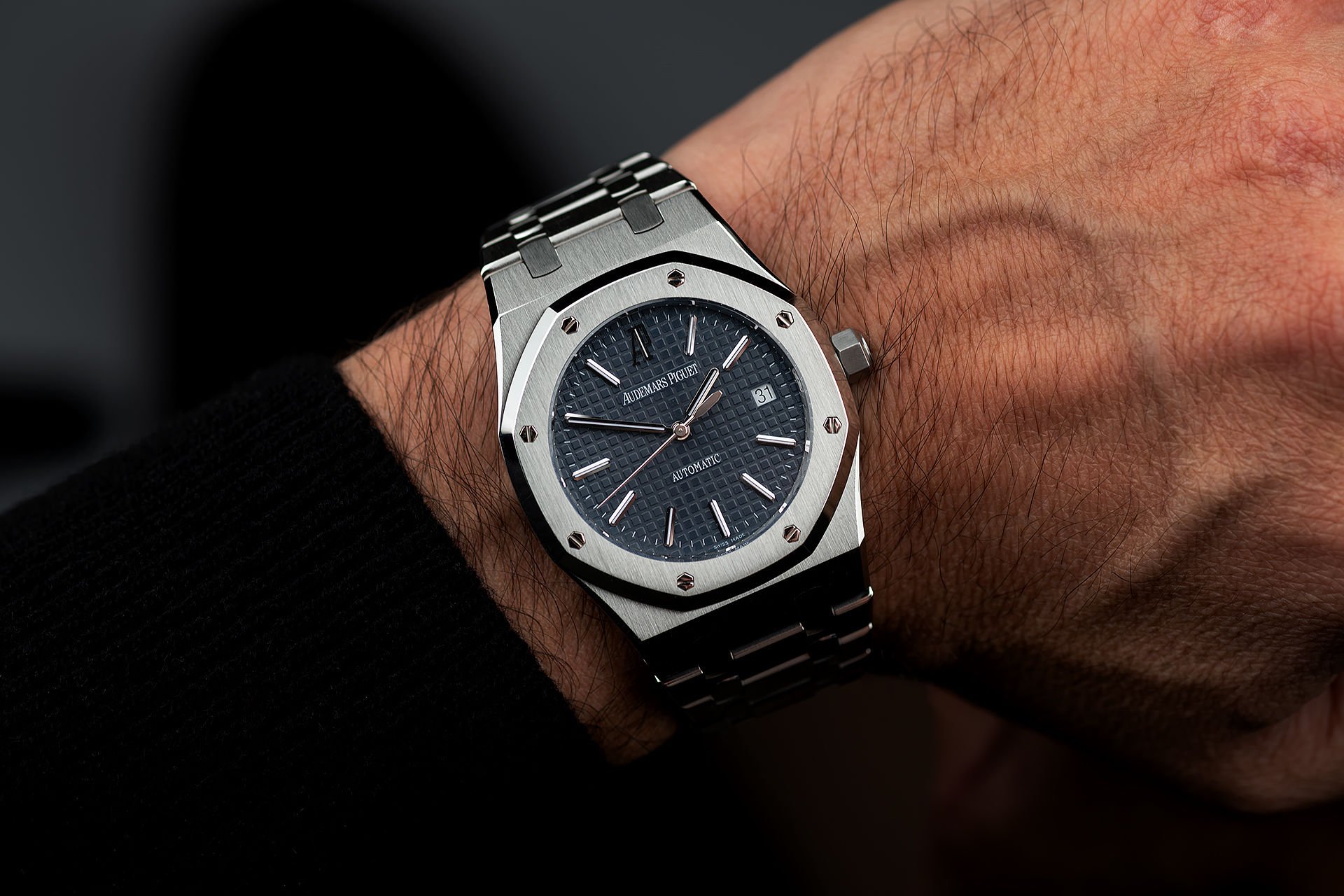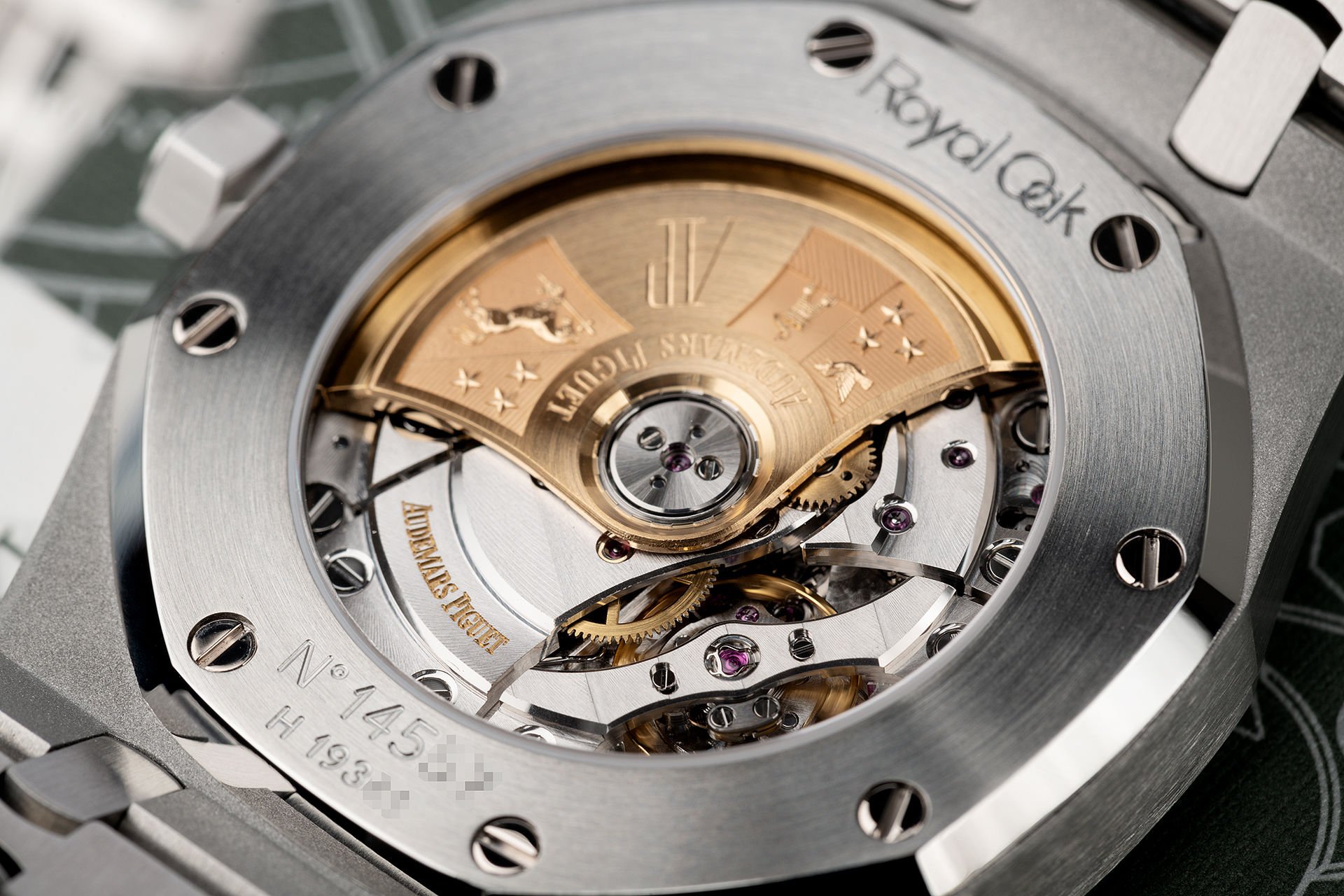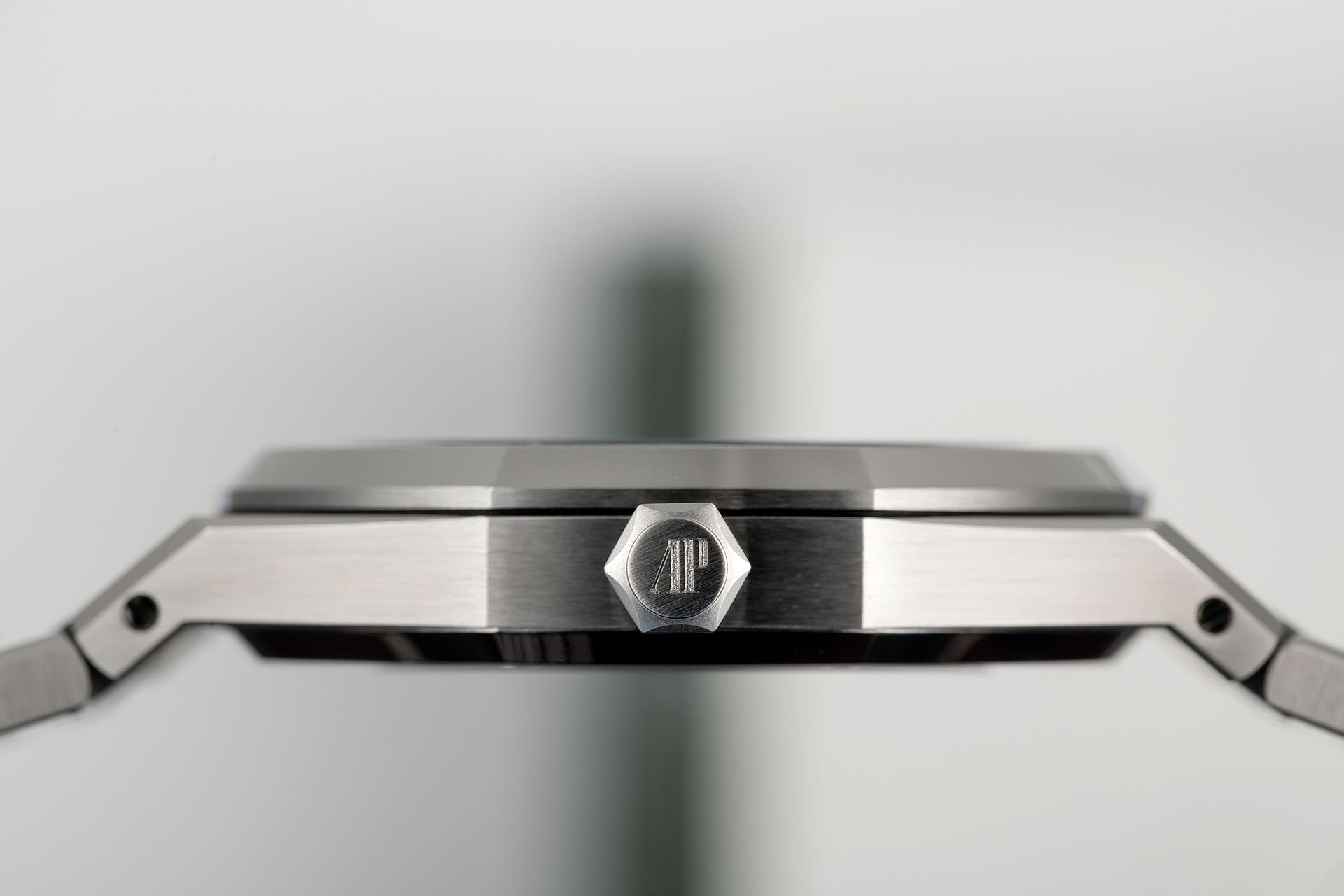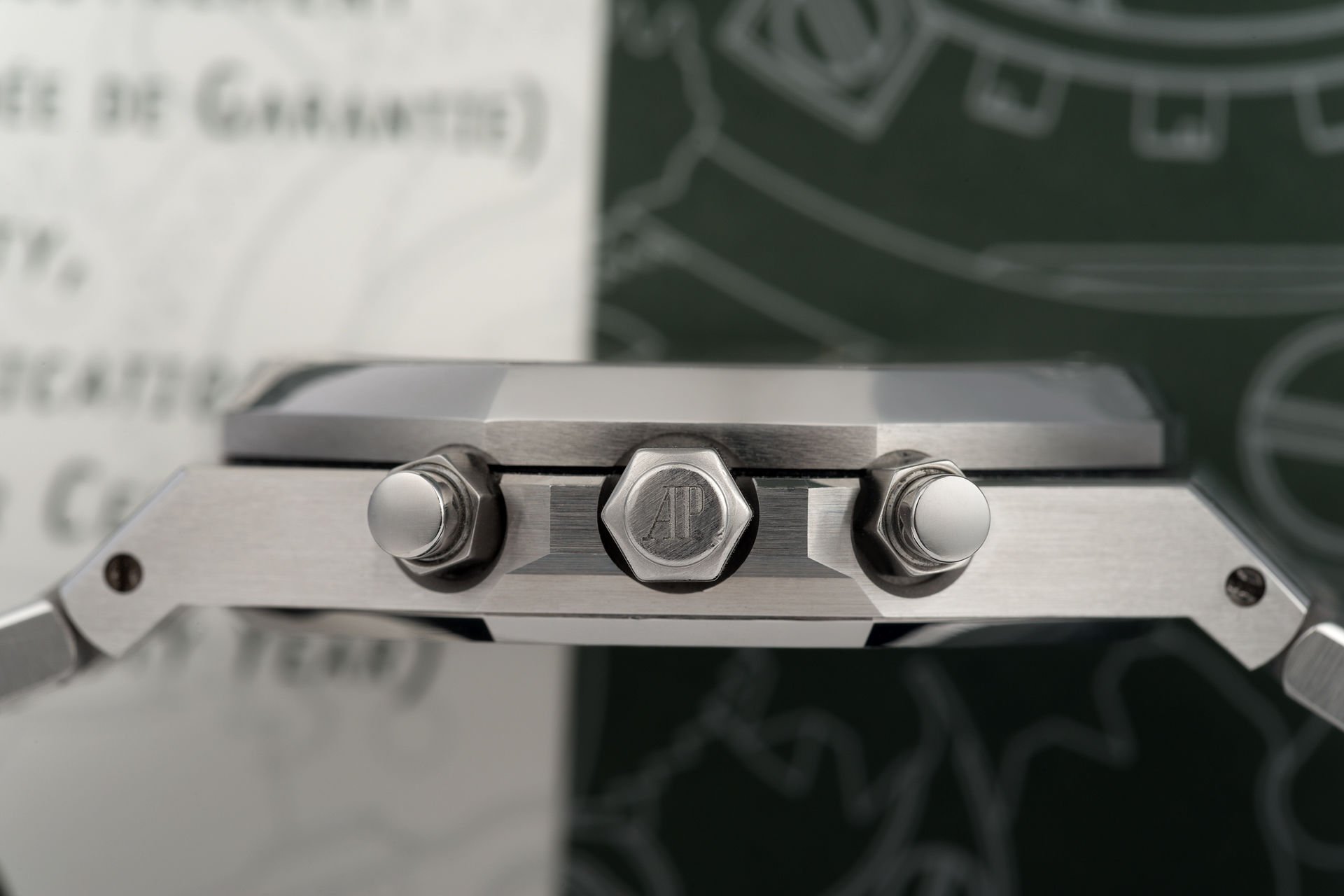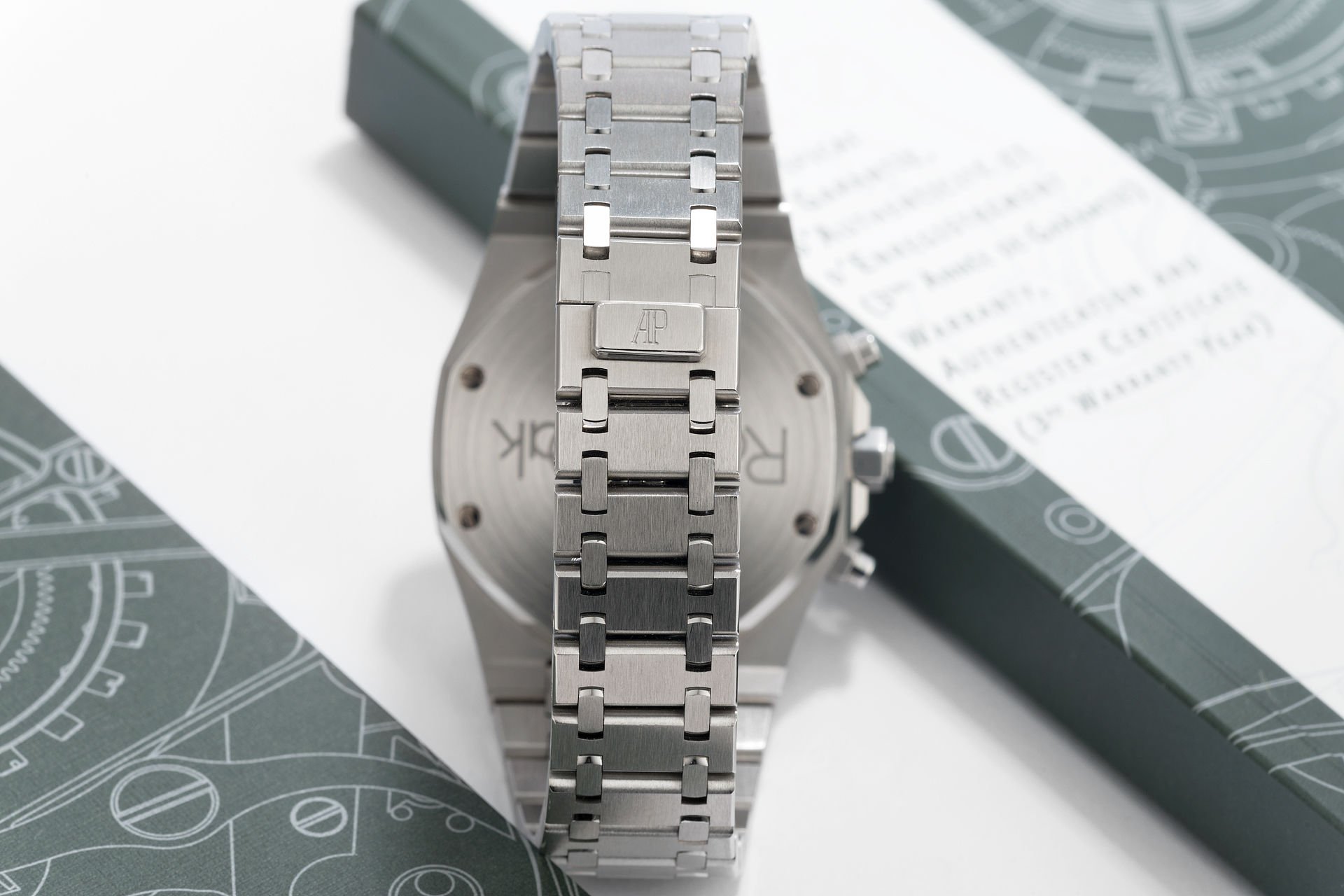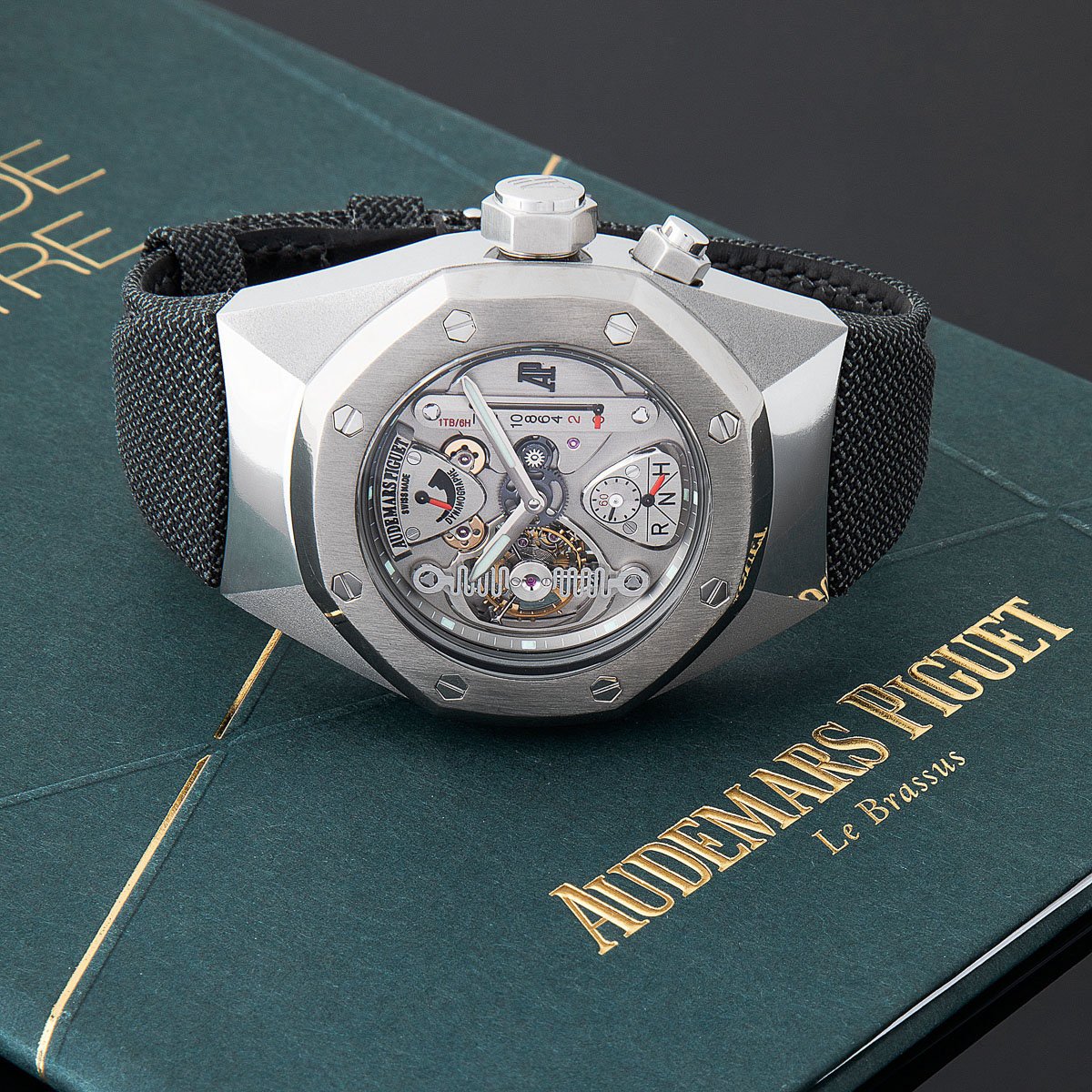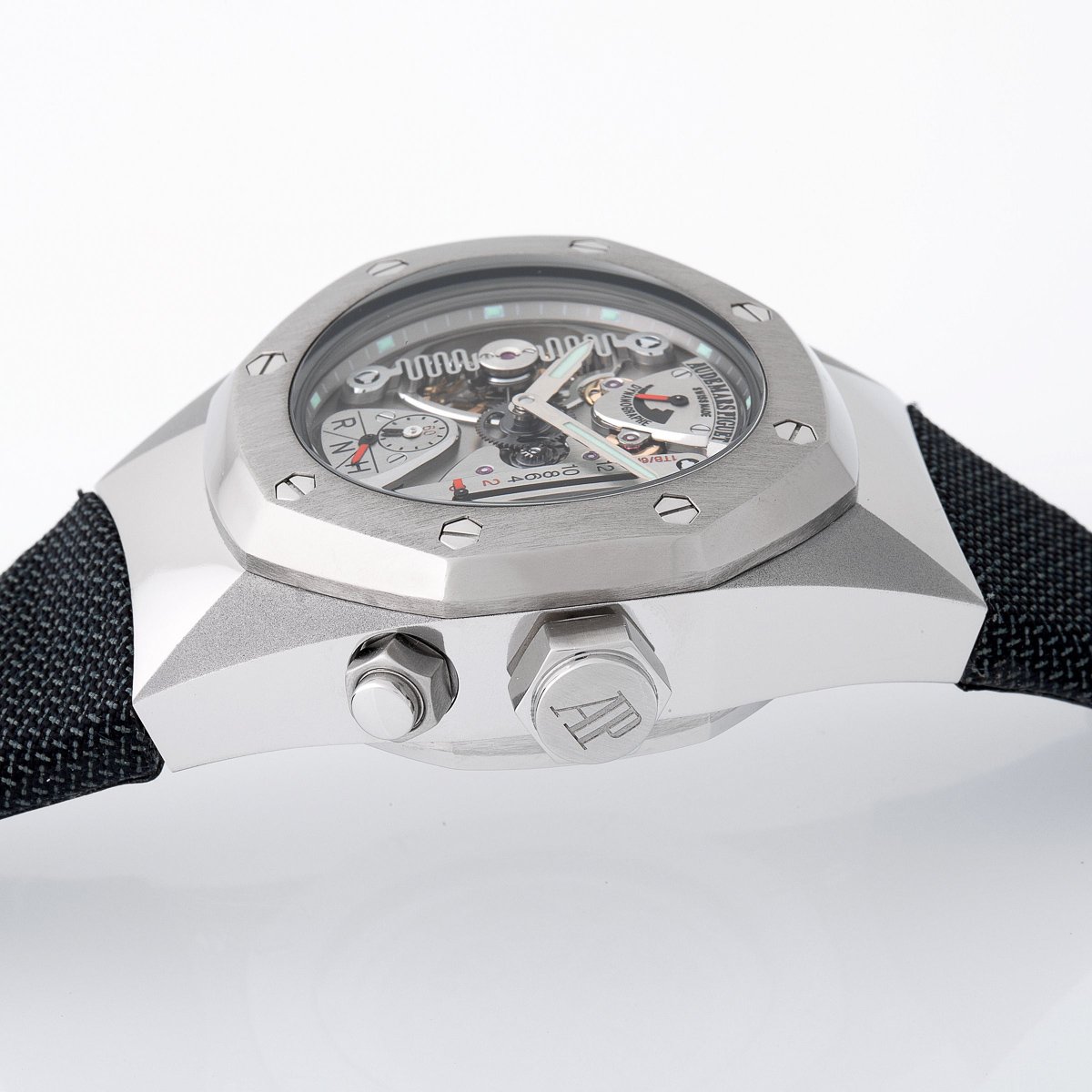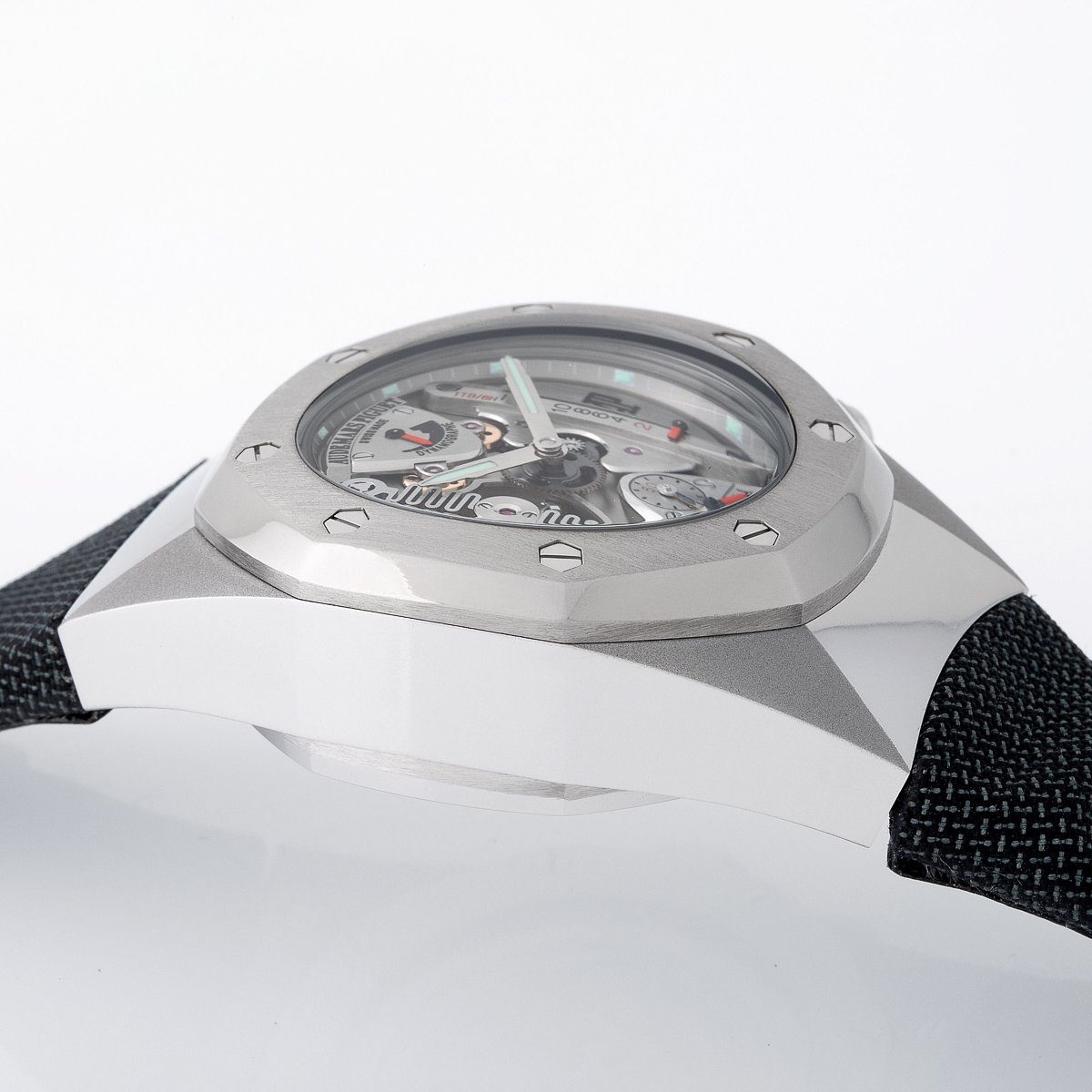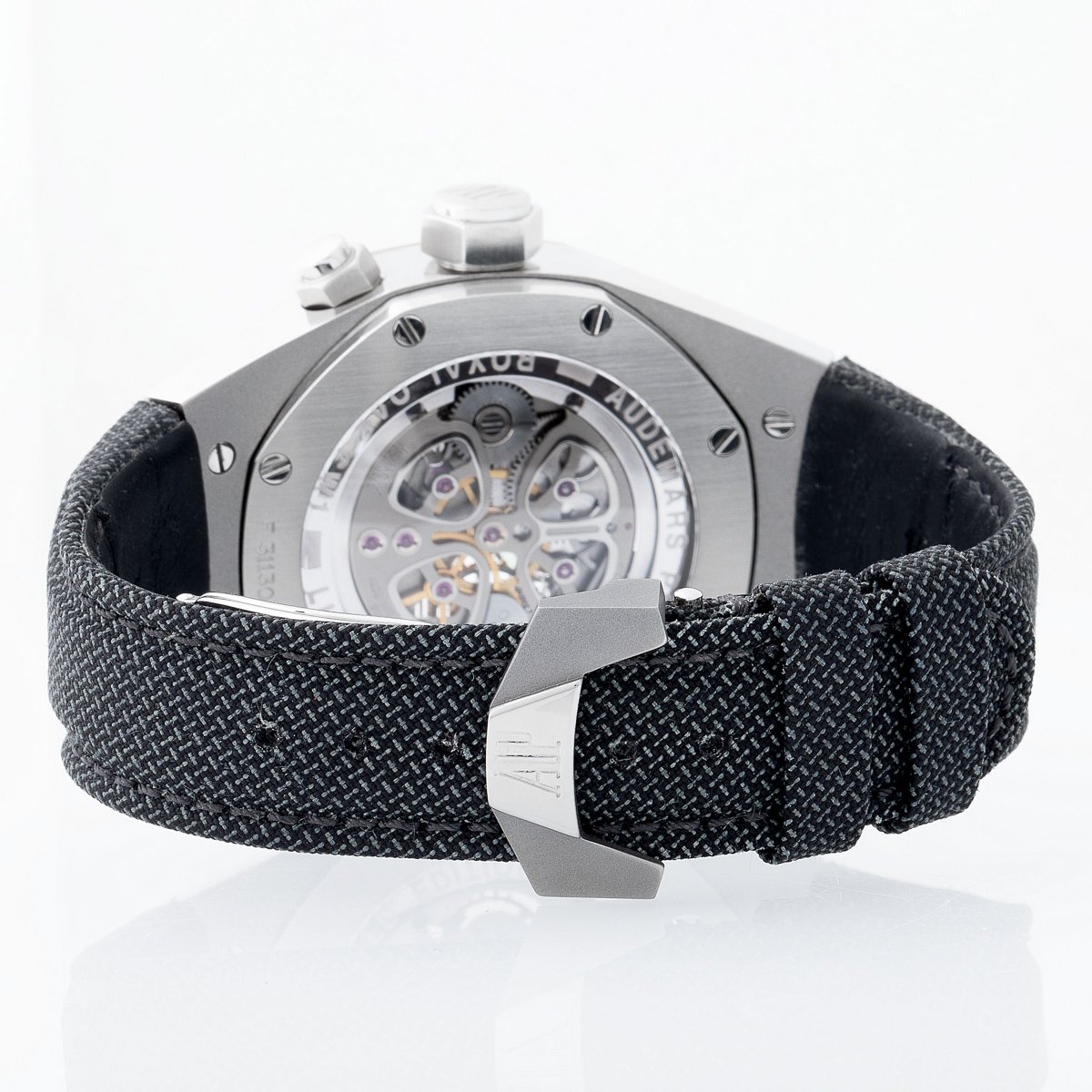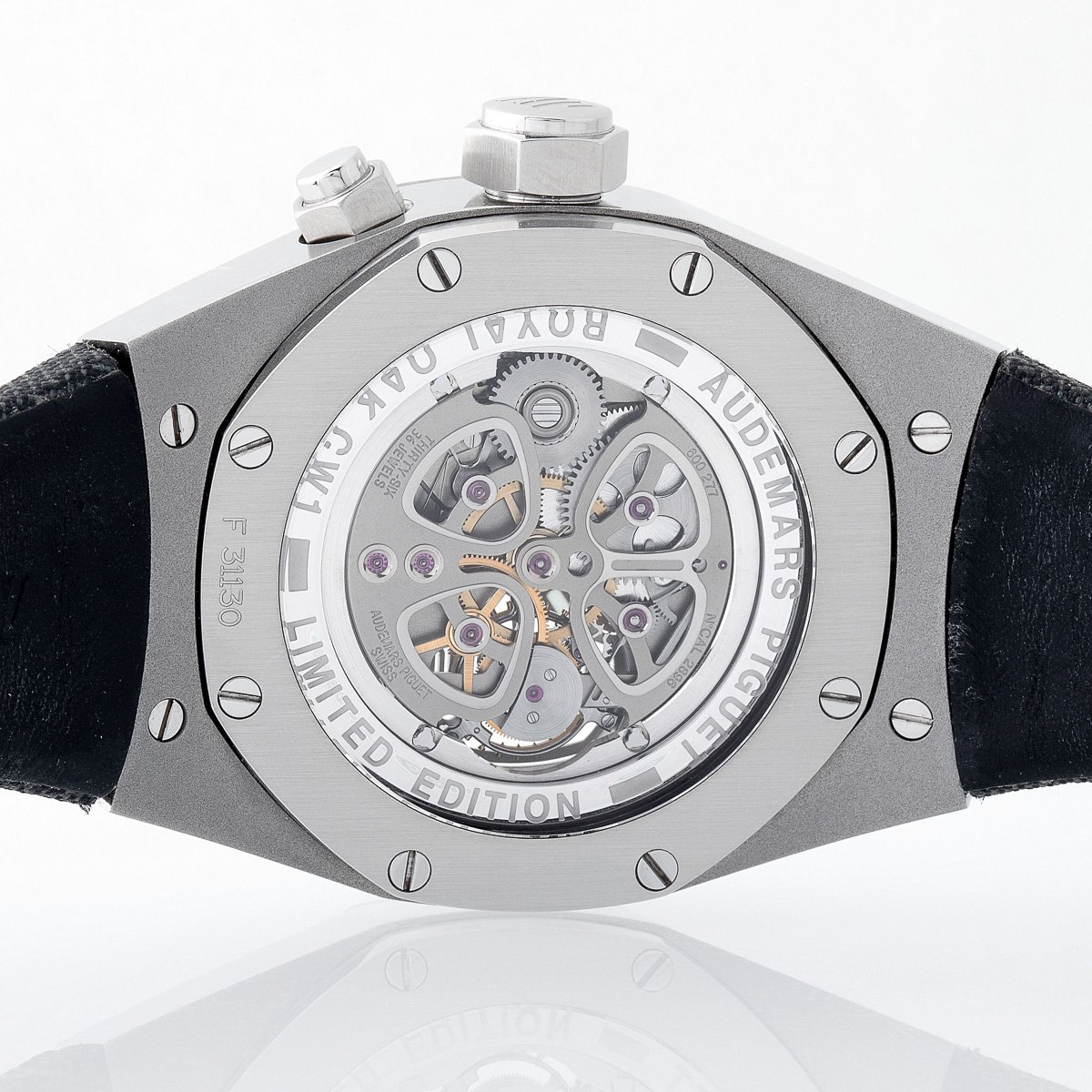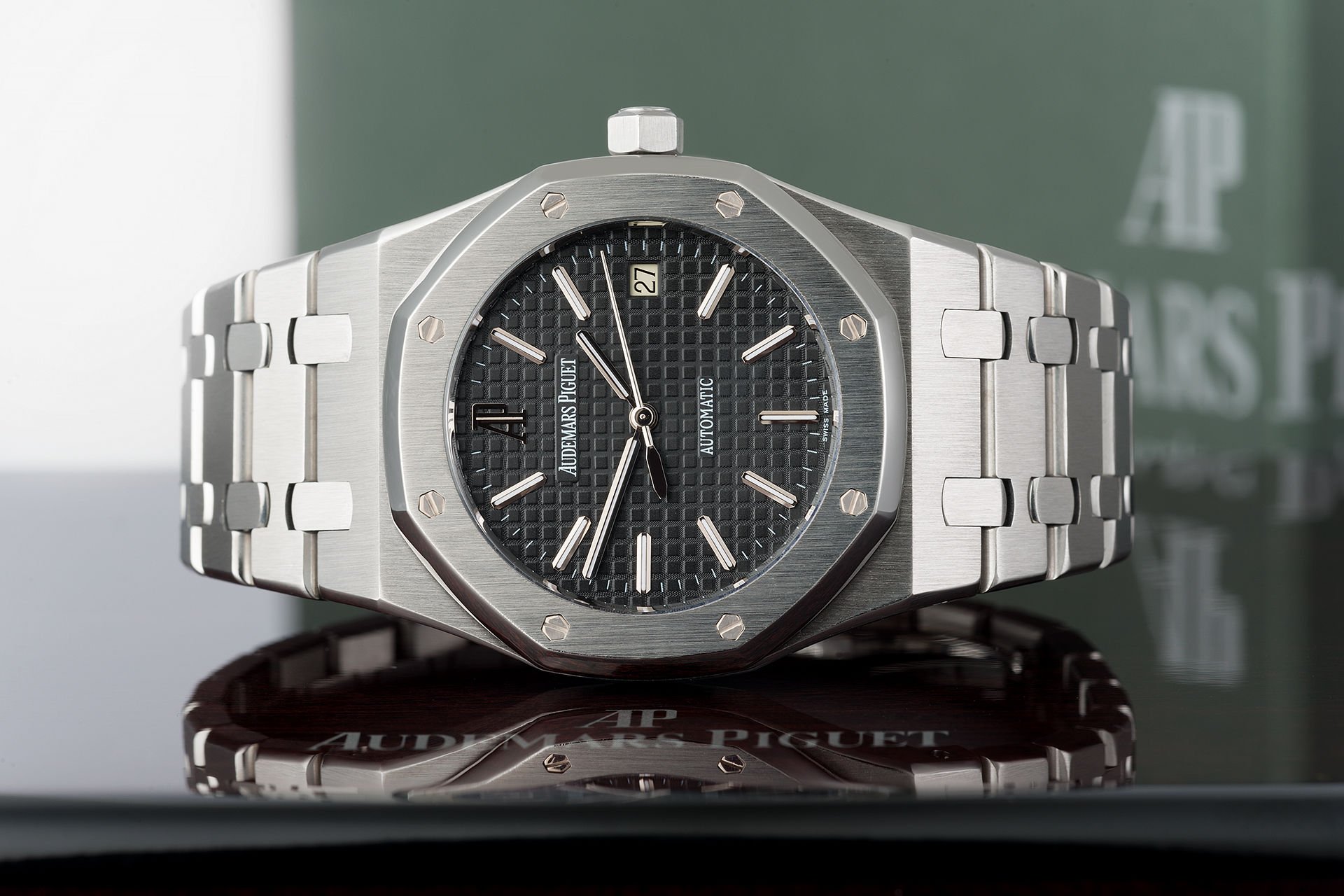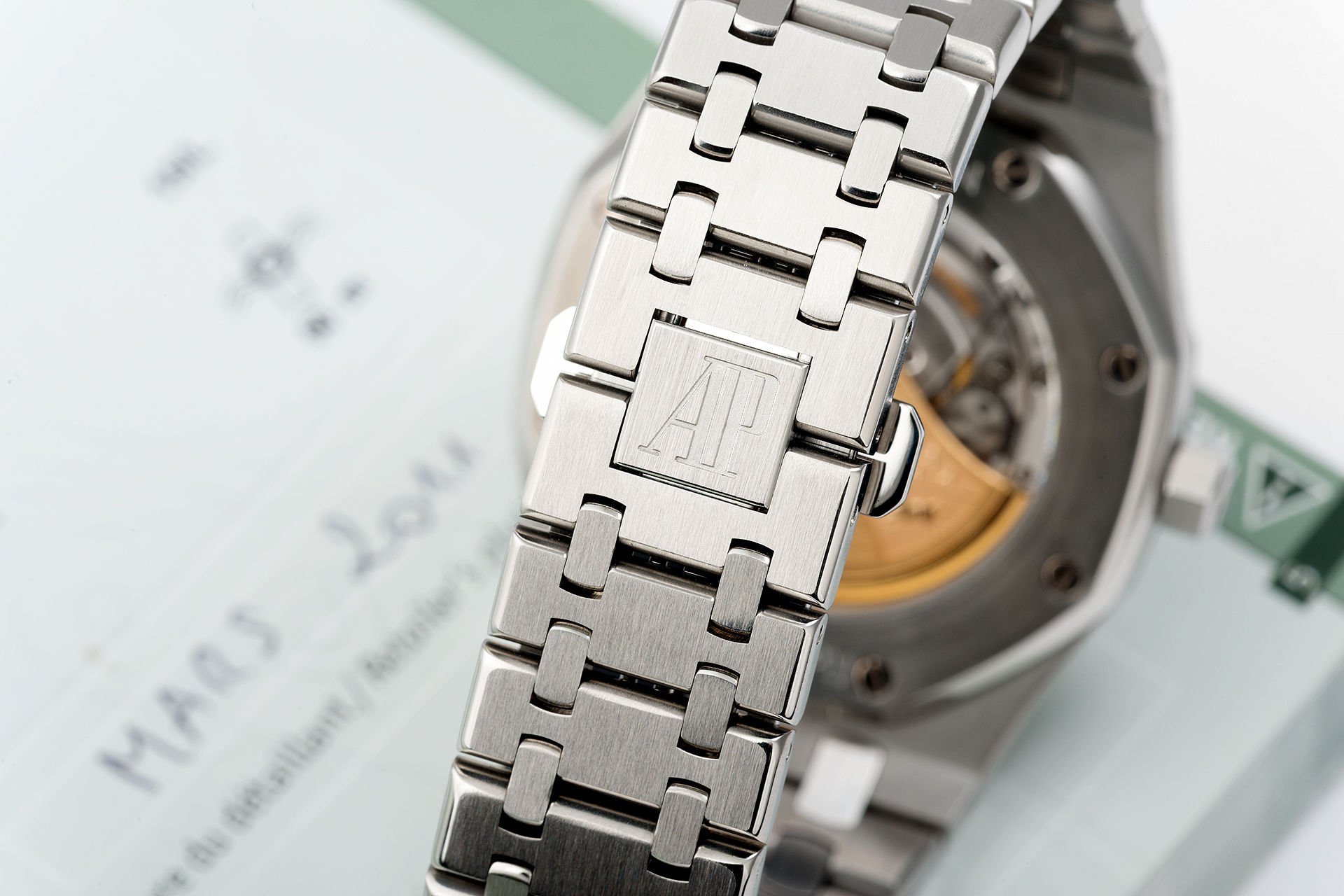Buying Guide: The Best Audemars Piguet Watches From The 2000s
We like to talk about vintage watches a lot within the Fratello team. Though most of what we write about is primarily focused on the most recent releases and developments, for many of us, a lot of the fun can be found in the sometimes weird and often wonderful world of vintage watches. It’s a world full of history, remarkable watches, incredible stories, and quirky details. It inspired us to come up with a series of articles focusing on the best watches per decade from a select group of brands. Some of them are priceless, and some of them are still affordable. In this installment, we will take a look at the best Audemars Piguet watches from the 2000s.
By the turn of the millennium, Switzerland had proudly reclaimed its title as the watchmaking capital of the world. The 2000s, in many ways, formed the blueprint for the watch industry as we know it today. By the time the 2000s came around, mechanical watches were incredibly popular. Instead of just selling instruments that told the time, the major brands became cornerstones in the world of luxury goods, and the watch industry was thriving.
We saw brands being bought by conglomerates that turned into the luxury powerhouses they are today. But the 2000s was also the decade that saw the rise of independent brands alongside the industry’s big players. Small brands made it their goal to push the envelope of watchmaking in terms of design and technological developments. In the early 2000s, we also saw watches increase in size like never before. Panerai, Audemars Piguet, Hublot, and IWC enjoyed a great rise in popularity with their oversized watches. They will all be part of the best watches of the 2000s.
Audemars Piguet in the 2000s
In the 2000s, Audemars Piguet further strengthened its position by expanding its Royal Oak legacy. We saw the brand introduce many watches that have become the foundation for the current collection. The early 2000s was also the era of oversized watches, and the Royal Oak Offshore has become an icon of that trend. The Offshore models quickly became the favorites of movie stars, musicians, and athletes. Arnold Schwarzenegger in particular played a big part in popularizing the Royal Oak Offshore, as he wore them in End of Days and Terminator 3. Remember that 48mm Royal Oak Offshore T3? That watch was a true murder weapon.
Rappers also made the Royal Oak Offshore their watch of choice. Jay-Z started wearing them, and soon other iconic rappers like Pharrel Williams, Kanye West, and Lil Wayne followed. And let’s not forget famous athletes like basketball superstar Lebron James and race car drivers Juan Pablo Montoya and Rubens Barichello. They all had their own limited-edition Royal Oak Offshore models.
More than the Royal Oak Offshore
But let’s not forget the regular Royal Oak collection. Even though it was not the hot commodity the Offshore was — hard to believe, considering its iconic value and current popularity — Audemars Piguet introduced several amazing Royal Oak models in the 2000s. When it comes to creating a list for Audemars Piguet, the question is always whether you even have to cover the non-Royal Oak collections.
The honest answer is that, in my opinion, the most iconic and interesting pieces of the decade are the Royal Oak models. The other collections also hold some amazing timepieces, don’t get me wrong. But we all know where the main attraction of the brand is. This is why I have selected five of the most remarkable Royal Oak models from the 2000s. As always, I could have picked many other models, as Audemars Piguet released a great number of brilliant timepieces. But let’s jump in and look at five of the best.
The Entry Point — Audemars Piguet Royal Oak Offshore Juan Pablo Montoya ref. 26030IO
Let’s start this list off with a very famous limited-edition Royal Oak Offshore. In 2004, Audemars Piguet and Colombian race car driver Juan Pablo Montoya teamed up for a series of limited-edition Royal Oak Offshore models. The first was a titanium version with a silver dial (ref. 26030IO) produced in a limited run of 1,000 pieces. The second was a rose gold version with a black dial (ref. 26020RO), of which Audemars Piguet made 500 pieces. The last was a stunning platinum version with a blue dial (ref. 26030PO), which was a limited edition of only 100 pieces. These watches quickly became fan favorites and are still among the most legendary Royal Oak Offshore models.
For this list, I picked the titanium model as the entry point. As you know, the entry point means the most affordable out of the five watches on this list. It’s not necessarily an affordable watch, but we will get to that. This specific Montoya limited edition features a 44mm titanium case that is 15.5mm thick and 53mm from lug to lug. But if you add the plots — designed like gas pedals — that connect the strap to the case, that increases to almost 58mm, as they do not fold down completely. So, this is definitely a big watch, and it is water-resistant to 100 meters. But as it is made from titanium, it still is very wearable if you can handle the size. As you can imagine, the rose gold and platinum models are the real heavy hitters compared to this piece.
A wavy dial pattern
If we zoom in on the dial, the first thing your eye hits is probably not the dial itself. What immediately stands out is the carbon fiber that Audemars Piguet used for the bezel and the hoods of the pusher shoulders. It’s a reference to the racing inspiration of the model. The theme can be seen in different aspects, such as the crown that looks like the center nut of an F1 car, the sides of the pushers that look like air vents, and the relieved channels used on the bezel. All these details refer to the racing character of the watch. And there is the extravagant racing-style strap in black with white stitching, which pays homage to the racing cars and leather racing goods from the past and the more modern Nomex racing suits. There’s no doubt about it — this piece embodies motorsports.
On the dial, you will find the sub-dial hands executed in the colors of the flag of Colombia, Montoya’s home country. On top of that, the Grande Tapisserie pattern gets a wavy motif, referring either to the waving of the Colombian or the checkered flag (I’ll leave that up to you). If you turn the watch around, you will see the Audemars Piguet caliber 2226 through the sapphire display case back. This was the first Royal Oak with the feature. The automatic modular chronograph movement is based on the Jaeger-LeCoultre caliber 889 with a Dubois-Dépraz vertical-clutch chronograph module. It operates at 28,800 and has 54 jewels with a 40-hour power reserve. This was the first of the F1 Royal Oak Offshore timepieces, and many consider it the best. Current prices average €28K to €35K.
My choice — Audemars Piguet Royal Oak “Jumbo” ref. 15202ST
My pick for this list is the Audemars Piguet Royal Oak “Jumbo” ref. 15202ST. When it comes to Royal Oak models, I am a purist. I adore what Gérald Genta had in mind for the watch, and his vision represents the perfection that I want to see in the Royal Oak. So I will always choose the Royal Oak closest to Genta’s original ref. 5402. Audemars Piguet introduced the Royal Oak ref. 15202 at SIHH 2000. It was the next addition to the Royal Oak “Jumbo” legacy. The watch was available with a silver-toned dial for the stainless steel and yellow gold variants for the first time. The steel 15202 was also available with “dark blue” and “cosmos blue” dials.
The watch still respected the design of the original 39mm stainless steel case with its integrated bracelet. For the dial design, Audemars Piguet took the liberty of changing it slightly compared to its predecessor, the 15002ST. That watch was one of my picks on the list of the most remarkable Audemars Piguet models from the 1990s. The main difference was that the designers moved the word “automatic” to the upper part of the dial, closer to the brand name. Additionally, the minute track features numerals for every five minutes, whereas it used to have just markers on the previous models. As a result, the “Swiss Made” text also moved up and was placed on both sides of the 6-o’clock index. While these small details do not hurt the overall design, they do prompt a lot of discussion amongst enthusiasts. As I am a Genta purist, you probably already know my opinion.
The same striking caliber
The monocoque case was water-resistant to 50 meters and featured the sapphire display case back that was introduced for the special 20th-anniversary model ref. 14802. But it had not been featured on a regular-production model, so technically, this was a first. The display case back gives a view of the trusted caliber 2121, which was used until the new Royal Oak collection was introduced earlier this year. The AP caliber 2121 is based on Jaeger-LeCoultre’s 920 movement. It operates at 21,600vph and has 36 jewels with 40 hours of power reserve. As Gerard mentioned in the article about his “Jubilee” model, this ultra-slim movement was used by Patek Philippe, Vacheron Constantin, and Audemars Piguet. Funnily enough, Jaeger-LeCoultre never used the movement.
The Royal Oak “Jumbo” ref. 15202ST was introduced in 2000 and stayed in production until 2012. That’s when the brand introduced a new “Jumbo” for the 40th anniversary of its icon. That model saw another update of the dial design with the AP monogram moving back to the lower part of the dial like on the original ref. 5402. Additionally, the minute track was also restored to its original layout. It makes this first-generation Royal Oak “Jumbo” ref. 15202ST a unique model. But despite the differences in dial design, the watch is still a great part of the Royal Oak “Jumbo” legacy. Prices for one start at roughly €80K and easily move up to a bonkers €135K.
Money is no object #1 — Audemars Piguet Royal Oak ref. 15300ST
Another landmark release of the decade was the Royal Oak ref. 15300ST in 2002. The new watch marked the debut of the in-house-developed caliber 3120 and introduced a slightly bulkier aesthetic to the Royal Oak. The watch still featured a 39mm stainless steel case, which is 9.4mm thick and has a 45.5mm lug-to-lug. It made it slightly thicker than the case of the ref. 15202ST that I just discussed, which measured 8.1mm in thickness. The thicker case on this model ushered in a thicker bracelet that still looked and wore amazingly well. But if you put this Royal Oak ref. 15300ST next to a “Jumbo” ref. 15202ST, you can see the difference in appearance.
Nevertheless, this updated version of the Royal Oak is a sturdier version of the original and is perfect as a modern daily wearer. It still is a very slim watch that easily slides under a cuff. The watch still features the amazingly finished case and bracelet that gives the Royal Oak more character. Interestingly, this model features a screw-down crown that the “Jumbo” models don’t have, but it has the same water-resistance rating of 50 meters Looking at the dial design, you will see that the “Automatic” text is bigger than it ever was on the “Jumbo” models. Additionally, you will see a seconds hand added to the white gold handset, whereas the “Jumbo” models only feature hour and minute hands.
A new sturdy movement
Inside the case, Audemars Piguet equipped the new Royal Oak with the in-house caliber 3120. The automatic movement consists of 280 parts and features a 22K gold rotor with both the Audemars and Piguet coats of arms engraved on it. The movement operates at 21,600vph, has 40 jewels, and delivers 60 hours of power reserve. It introduced a hacking seconds hand to the standard Royal Oak models and featured a quick-set date at 3 o’clock. Overall, it’s a sturdier movement than the caliber 2121 used in the “Jumbo,” and it comes with a greater power reserve.
The Royal Oak ref. 15300 was produced from 2005 until 2011. Because it had such a short production time, the watch has become a popular reference with collectors. In 2012, Audemars Piguet introduced the 41mm update of the watch with ref. 15400. Besides being 2mm bigger, that watch is also slightly thicker. As most of you will know, the Royal Oak models wear slightly larger than their actual size, so the 39mm ref. 15300 is the better daily wearer than its bigger brother, in my opinion. Finding one for sale is not that hard. Finding the money, however, might be a bigger challenge. The white and black-dial versions start at roughly €45K and increase to €70K. The blue-dial version starts at roughly €65K and moves up to €120K.
Money is no object #2 — Audemars Piguet Royal Oak Chronograph ref. 26300ST
Now we’re moving on to the Royal Oak Chronograph. In my article about the best models from the 1990s, I selected the first Royal Oak Chronograph model introduced on the 25th anniversary of the Royal Oak in 1997. I picked the Royal Oak Chronograph ref. 25960ST with a black dial. It was nicknamed “The Kasparov”, and it still looks amazing. But there is one Royal Oak Chronograph model that tops them all, and that is this Royal Oak Chronograph ref. 26300ST. There are more executions of the Royal Oak Chronograph ref. 26300ST, but this silver dial with black and red elements takes the grand prize. The only element I like more about its predecessor is the Petite Tapisserie dial compared to this model’s Grande Tapisserie dial.
The watch still respects the original 39mm case size, and it is 11mm thick and 49.5mm from lug to lug. So it’s a rather slim chronograph watch thanks to the integrated chronograph movement, which we will get to in a second. I like the case construction because it restores the function of the screws in the bezel. On the previous generation of the Royal Oak chronograph, the screws were merely there for show. This reference returns to the original construction, and it is water-resistant to 50 meters. What I love about the dial of this watch specifically is that the overall design feels very balanced. All the elements are placed in perfect harmony, resulting in a dial that is very easy to read and creates a great visual balance.
The brilliantly balanced dial design
As a result, the integration of the colors worked perfectly. As mentioned, the watch featured a beautiful silver dial and a black outer ring with red minute markers and white printed numerals for every five minutes. The sub-dials are another thing of great beauty. They are perfectly balanced with their white bases and black center portions. Add the small white hands with black bases and red tips, as well as the red central chronograph hand, and you have proof of how delicately balanced this dial is. Audemars Piguet equipped the watch with the AP caliber 2385. This automatic chronograph movement is just 5.5mm thick, and the base movement is the F. Piguet caliber 1185.
This movement was also used for the Vacheron Constantin Overseas Chronograph and the Breguet Marine Chronograph. It operates at 21,600vph and has a 40-hour power reserve. It features a date window between 4 and 5 o’clock and has an 18K gold oscillating weight. Because of the slim profile of the movement, Audemars Piguet could keep the total height of the case limited to just 11mm. Add the brilliant bracelet and this stunning dial design, and you get the perfect Audemars Piguet Royal Oak Chronograph. The ref. 26300ST was produced from 2008 until 2012 when it was replaced with its 41mm successor. Prices for these models have skyrocketed, starting at roughly €50K and going up to €80K.
Money is no object #3 — Audemars Piguet Royal Oak Concept ref. 25980AI
The last pick for this list is the first of the Audemars Piguet Royal Oak Concept models. The Royal Oak Concept models are among my favorites from the brand next to the traditional Royal Oak watches. They perfectly show how incredibly strong and effective Genta’s design was. The Concept models push the boundaries of that design without ever losing it completely. Additionally, Audemars Piguet used the Concept line as a platform to push the boundaries of incredible watchmaking. As a result, some of the Concept models are marvels of technology featuring daring designs and unique materials. Many purists don’t like the Concept line. I, for one, am not one of them. I love them for what they are — concept watches.
The watch that started it was the Audemars Piguet Royal Oak Concept ref. 25980AI that was released in 2002. The watch was produced in a limited-edition run of 150 pieces to celebrate the 30th anniversary of the Royal Oak. The watch features a 44mm case made of Alacrite 602 with the bezel made of grade 5 titanium. Alacrite 602 is a unique cobalt alloy made from 57% cobalt, 31% chrome, 5% tungsten, with trace amounts of carbon, silicon, and iron. The material is incredibly hard to machine and has a hardness rating of 430 Vickers, roughly twice the hardness rating of 316L steel. It is why the case production alone takes up to 60 hours.
Not for the faint-hearted
The case of this model is 44mm in diameter, 18mm in height, and 57.6mm from lug to lug. This is a big watch for people with big wrists. The watch came with a strap made of a combination of leather on the inside and technical fabric on the outside. The titanium buckle is a single-fold AP-logo buckle that features polished and blasted finishes. Overall, the strap is hefty and durable to match the unique case. It is a case with a lot of character thanks to all the different sharp angles and its slightly curved design. The bezel is also curved, creating a unique profile for the 100m water-resistant case.
On the side of the case, you will find both a screw-down crown and pusher. If you unscrew the crown, you don’t have to pull it out. Depending on its mode, you can immediately use it to either set the time, wind the watch, or do nothing in neutral mode. These modes are operated with the pusher at 4 o’clock. If you unscrew that and push it, you will see the indicator at 6 o’clock jump to the different modes indicated with R (remontoir), N (neutre), and H. (heures). These are the French words indicating winding, neutral, and time-setting modes. Additionally, the dial features a linear power reserve indicator and small seconds just above the mode indicator.
A Renaud & Papi creation
Additionally, you will see a dynamographe at 12 o’clock. It displays an instantaneous reading of the torque from the mainspring. Ideally, you don’t want too much or too little torque. So when the indicator starts moving too far to the right or left, it indicates that the timekeeping will become less accurate. However, it’s a great complication that is very difficult to design and produce. On the left side of the dial, you will see the tourbillon with electro-eroded titanium shock suspension. Essentially the tourbillon gets its shock protection from the shock-absorbing tourbillon bridge you see at 9 o’clock. The movement that Audemars Piguet used was the manual-wind caliber 2896. It was developed by the famous high-complication manufacture Renaud & Papi.
The beautifully made movement can also be seen through the sapphire display case back. It has 36 jewels and features a 72-hour power reserve. On the back, you will also find the indication that this is the Audemars Piguet Royal Oak CW1. That’s also why watch enthusiasts refer to it as the Concept 1. This was supposed to be a one-off creation when it was released. But eventually, in 2008, Audemars Piguet released the second Royal Oak Concept as it turned out to be the perfect platform to showcase the brand’s unique skills. Finding one of these unique pieces is not impossible. Expect to see prices ranging from €180K to €200K. What you get in return is a unique timepiece in so many respects.
Final thoughts
Yes, I did it again. I compiled a list of only Royal Oak models from the 2000s — guilty as charged! There are quite a few other models that would have been perfect additions to this list. There are Perpetual Calendar models with classic styling, iconic pieces in the Royal Oak Offshore line, and more of the unique Royal Oak Concept watches. I’m sure we could come up with at least a couple more. But this selection of five models represents perfectly what makes the Royal Oak watches so universally loved. On top of that, it shows the brilliance of Genta’s original idea.
If you would like to find out more about Audemars Piguet or the Royal Oak, there are plenty of sources out there. Starting with books, Royal Oak by Martin K. Wehrli and Heinz Heimann is a great reference for the brand’s biggest icon. A second would be Audemars Piguet 2011 Collections: Le maitre de l’Horlogerie Depuis 1875 released by the brand itself. Lastly, the brand also released Audemars Piguet 20th Century Complicated Wristwatches. Many articles have also been written on the different Royal Oak models and references.
Next week will be the final installment in the Buying Guide series. In the final article, I will be picking five A. Lange & Söhne models from the 2000s. Until then, please let us know what your favorite Audemars Piguet models from the 2000s are in the comments section below.

